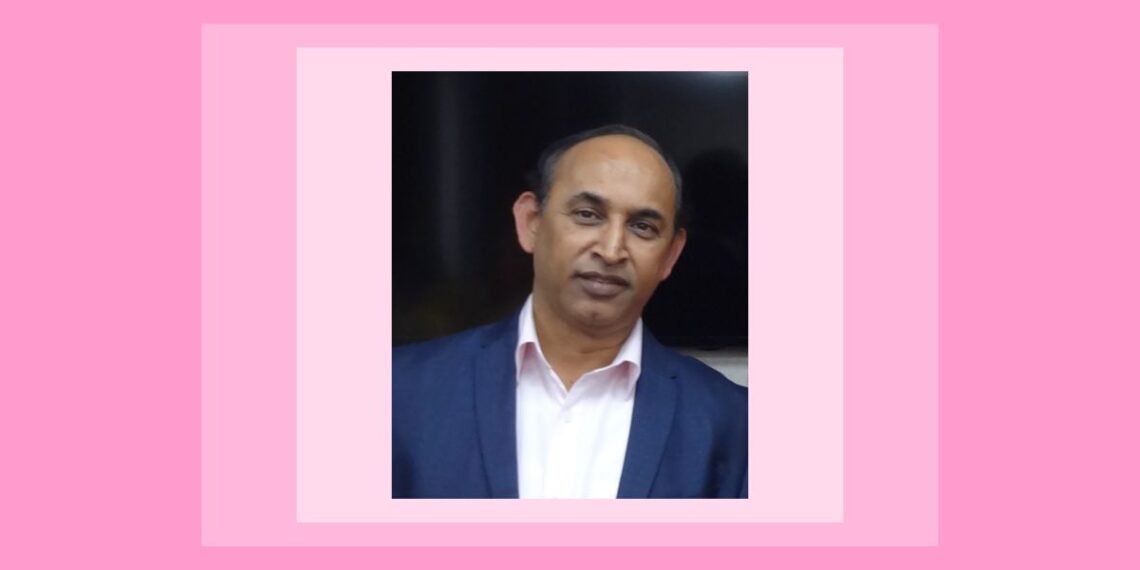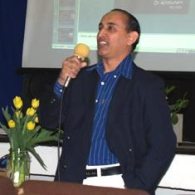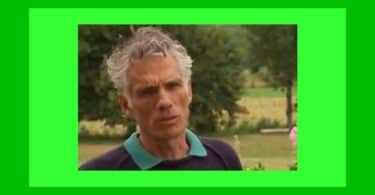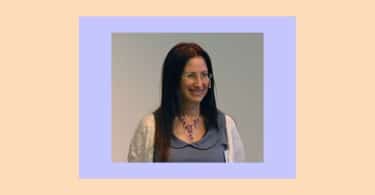The Influence of Culture on Health and the State of a Homoeopathic Physician
Dr. Ajit Kulkarni is a regular contributor to Hpathy. He is an international teacher, Director of the Homoeopathic Research Institute, Satara and Pune and author of Body Language and Homoeopathy, Law of Similars in Medical Science, Homoeopathic Posology, Kali Family and Its Relations, and co- author of A Select Homoeopathic Materia Medica Part – I and II.
(Courtesy: HMC Homeopathy Master Classes. Interview conducted by Roma Buchimensky)
HMC – You have taught more than 40 international seminars around the world and have clinics in many corners of the globe; you meet with people from all sorts of cultures and backgrounds.
Ajit- Yes, recently I returned back from Bulgaria after giving my 42nd international seminar, thanks to Roman Buchimensky, Director, Via Homeopatica who allowed me to blossom to my potentiality.
HMC – Does the cultural background of the person you treat have any influence over the way you approach them in your practice? Does it change your practice in any way?
Ajit – Definitely. When you meet people from all sorts of cultures and backgrounds, it makes a difference at every level. As a human being you have your own culture, your own value system and you are trained in a specific manner. It is with this entire heritage that you start looking at the people. I have written somewhere in my writings that life is nothing but our own perceptual filter. We approach the life, take in the experience and develop our own perception. It’s like what we sow, so we reap. It is we who do filtration and develop our vision.
We have to define first what is culture and what are its dimensions. Culture is the enduring behavior, ideas, attitudes and traditions and it gets transmitted from one generation to the next. We see things through a cultural lens that tints, magnifies, shrinks and otherwise shapes our perceptions. Our culture is a mindset that we developed during childhood socialization. What is normal in one culture may be regarded as abnormal in another culture. The interpretation of illness is influenced by the culture. According to the 19th century anthropologist and doctor, Rudolph Virchow, ‘disease is a disturbance of culture’. “Every culture has its own ‘idiom of distress’, the pattern of behavior by which people in that culture signify that they are ill” (Alloy, Jacobson and Acocella).
The influence of culture over society in general and individual in particular is a matter of serious study. Culture profoundly influences thoughts, emotions and behavior. It operates at primary, cognitive, perceptual and motivational levels. It acts as a blueprint for operation within our physical and social domain. The world is shrinking in size and new cross-cultural networks are getting formed. The period between two generations is becoming progressively diminished and children are becoming early adults. The media influence has encroached beyond control and people are going away from nature in every facet of life. We have to see this in the context of cultural background.
There are three levels of operation – as a human being, as a physician and as a homoeopathic physician. The roles concerning each of them have to be clearly defined. When you are working as a human being, you have the onus to look upon the sufferers through a humanitarian lens. When you are working as a physician, your role gets widened in terms of diagnosis of the disease and overall management of the patient. But if you have to perform the role of a homoeopath, it’s altogether a different level of consciousness. Defining the concepts of health, disease and cure in the right appreciation and applying them on an individual instance becomes an obligation for a homoeopath, given the holistic philosophy of homoeopathy.
Culture does change the approach while treating with homoeopathic therapy. One of the main reasons is that homoeopathy approaches not only the body but also the mind and the soul. Culture is always related to all three – body, mind and soul. The repercussions of culture have bearing upon selection and interpretation of rubrics. Moreover, a homoeopath must see that he doesn’t suffer from cultural shock (a term coined by Kalervo Oberg during 1954) i.e. feelings of anxiety, surprise, disorientation, uncertainty, confusion, disgust etc. that grow out of the difficulties in assimilating the new culture, causing difficulty in knowing what is appropriate and what is not.
HMC – How is your practice outside India different from that in India (where you practice most of the time)?
Ajit – The practice in India is different in many respects from rest of the world, especially when you are treating the European community. Although appointment system is followed in big cities in India, it is difficult to follow in rural India. Indian patients are of different castes and creeds and are not habituated to work on an appointment system. Many poor and illiterate patients don’t even ring the doctor for appointment and they directly enter the clinic. They have already spent some money on travel and food and to say no to them is difficult. The position of a doctor in India is also different. A doctor has respect and honor in the society and in rural parts of India, a doctor is still regarded as next to God. You may think it as absurd, but see there are many benefits of this type of approach. First, the sense of responsibility on the part of a doctor is increased multifold and secondly, a patient keeps full trust in the doctor. This relationship helps a patient to recover and further there is always a symbiotic relation between them that helps to foster the required forces.
The major difference which I have noted, when I compare Indian and outside Indian patients, is at the level of clinical interview. There is much more intellectualization and theorizing of the data by the foreign patients and it takes much more energy and time in getting accurate data. I can cite some examples. One patient while asking about any effects of food over health, answered, “My soul doesn’t accept milk”. The simple meaning of this sentence is that milk is intolerable and now we have just to ask “What symptoms do you get when you take milk”? Clinical interview with Indian patients is easier. Indians tell their complaints as they are and don’t add to make the stuff more complex. Their ego is less and they focus more on giving the objective data. Interpersonal problems are more deep and frequent in foreign patients as also the feelings of loneliness and being abandoned.
Even in India there are different layers of patients. Most of the Indian patients don’t ask for the names of remedies and they keep their faith in a homoeopath. The classical prescribers often give a single dose and then most of the practice is on placebo. In foreign countries, a remedy is usually prescribed and a patient buys the remedy from a pharmacy. A pharmacist’s role is only to give a prescribed remedy. A homoeopath gets his consultation charges for the prescription. Some patients apply their half knowledge of materia medica to the known remedy, look into the internet and argue with a homoeopath. In India a homoeopath can’t charge a heavy consultation fee. Although homoeopathic practice requires the most intellectual exercise, still it is regarded as a secondary medical therapy. Often the situation in India is that a patient may spend heavy charges for investigations, but for a good case-taking that involves total life space of a patient and more than 2 hours, a patient resents giving a homoeopath his due right.
Giving placebo helps in getting money and effects of placebo are no doubt tremendous especially for a homoeopath, who has to apply the principle of minimum dose. Placebo helps in making a patient health conscious; it helps in a regular follow-up, in a special kind of physician-patient relation and gives time for a wise physician to take an appropriate decision. I maintain that giving placebo helps both patient and physician to steer towards recovery in a better way.
Culture does play an important part in bigoted convictions and superstitions. In undeveloped countries, we get many patients with bizarre ideas that are stamped and carried forward. However, it doesn’t mean that these ideas are not present in developed countries. In India, we have to define the action keeping at the core the influence of culture. My observation is that patients of America and Europe make use of gestures more than Indians. There are some cultural variations in expressions and interpretations of body language too.
HMC – What can you say about the sort of diseases present in particular parts of the world in relationship to other places? Is there any difference?
Ajit – Yes, there is difference and it is related to culture and consequent life style. In Indian society we get more cases of psoric and sycotic miasms while outside India, esp. in Europe, cases with strong pathologies are observed that are of tubercular and syphilitic types. In India, family is a unit and although the concept of singular family is getting reduced, yet the joint family concept is dominant. There is much more sharing of emotions and nurturing in a family and we get fewer patients with abandoned and isolated feelings. In contrast with this, the personal space which the foreign patients maintain is a larger one and often it is with a thick wall and surrounded by an impenetrable fence. People don’t get adequate opportunity to ventilate and they get absorbed in their sufferings. To go for a deeper interview, hence, requires special techniques. It even makes a difference in psychotherapy. Maybe I am consulted for strong pathologies, but when I compare the Indian counterpart, I find that cases of auto-immune disorders, malignancy, metabolic disorders and addictions are much more in foreign societies.
The indulgence in alcohol is higher in European countries and is a matter of concern. Males getting alcoholic and finally coming to severing the relations and heading for divorce are on the increase and a conscientious homoeopath has to take into account the environment in totality. What can you say when a 5 year old boy has a craving for beer and daily he and his father sit together to enjoy beer?
HMC – What about the social background of the patient? Does it reflect in the kind of disease they tend to develop? Is there a difference in the type of disease children tend to develop in different parts of the world?
Ajit – The above two questions should be studied in the context of earlier views. I see more cases of atopic dermatitis in children in Europe and also cases of follicular tonsillitis. I am also getting consulted for juvenile diabetes and juvenile rheumatoid arthritis. Obesity is more observed in foreign countries esp. European and American. I attribute this to junk food which is consumed in large quantities. I have on my record several cases of adolescents who become very arrogant and difficult to handle by their parents. This arrogance I attribute to ego-hypertrophic training which the parents in particular and the educational system in general render in rearing up their children.
It may be an exaggeration, but it is said that every home has at least one orphan. I have come across one more problem. In India, it is usually the father who keeps a dominant role in the family. In western society, it is more the mother who controls the situation. I have been consulted for many adolescents – both boys and girls – who narrate their grievances against their mothers in the interview.
HMC – Could you speak a little about the position of different governments around the world regarding Homeopathy? Is there a significant difference?
Ajit – First note that the popularity of Homoeopathy is on the rise, today, all over the world. Outside Europe in countries as India, Mexico, Pakistan, South Africa homeopathy is established as a primary discrete healthcare discipline with an in-depth undergraduate education and training and a professional infrastructure, which puts it on an equal level with conventional medicine.
In countries such as Australia and New Zealand homeopathy is developing into a complete healthcare profession and is receiving government recognition through positive enabling legislative change.
In India, there is a post-graduate course of three years in homoeopathy being run by private institutes and government (the undergraduate course is of five and half years). There is a research wing, namely Central Council for Research in Homoeopathy (CCRH), being conducted by the government. Despite the fact that Homoeopathy owes its origin to Germany, India has become the world leader in Homoeopathy, with about 2 lakh registered practitioners, 180 teaching institutions, including 31 post-graduate colleges, about 10,000 dispensaries in public sector, about 250 hospitals and 650 drug manufacturing units. A survey conducted by ICMR in 2003, reveals that Homoeopathy was preferred by 1/3rd of the surveyed households in India for minor ailments and by about 18% in cases of serious ailments.
Homoeopathy is also recognized officially in countries like Bangladesh, Singapore, Dubai, Malaysia etc. Homeopathy is practiced across Europe by approximately equal numbers of lay homeopaths and homeopathic doctors. The distribution between countries is uneven with some countries having a proportionately larger number of homeopathic doctors. Some countries in Europe legally restrict the practice of homeopathy to doctors only : Austria, France, and Luxembourg. However in other countries like Denmark, Finland, Ireland, Norway, Sweden, the number of doctors who practice homeopathy is relatively low. Governments in Belgium, Denmark, Ireland, the Netherlands, Norway, Portugal and the UK have recently introduced legislation to positively regulate the area of Alternative Medicine including homoeopathy.
In some countries, such as Denmark and the UK, integrated healthcare projects have been or are carried out. Some of these projects include homeopaths who work closely with conventional health care personnel. The European Council for Classic Homeopathy (ECCH) was founded in 1990 and is represented in 27 countries in Europe, including all countries in Western Europe and an increasing number of countries in Eastern parts of Europe. Over the past year associations in three new countries have joined the Council. Homoeopathy has got official recognition in Germany, Switzerland, Canada etc. In the recent past, countries like UAE, Thailand, Cuba, Argentina, Iran, and Russia have granted official recognition to these systems, and new teaching institutions are coming up and research activities are being revitalized.
Homeopathy is widely accepted and getting more popular all over the world, including in Abu-Dhabi, Austria, Afghanistan, Argentina, Bahrain, Bermuda, Brunei, Brazil, Chili, Camarone, Cyprus, Canada, Costa Rica, Caribbean Islands, Egypt, Fiji, Finland, Greece, Germany, Guinea, Holland, Hungary, Ireland, Israel, Italy, IMO State, Japan, Kenya, Lithuania, Mauritius, Muscat, Nigeria, Norway, New Zealand, Neth Antilles, Panama, Philippines, Qatar, Romania, Switzerland, Sri Lanka, Saudi Arabia, Scotland, Slovakia, Spain, Taiwan, Ukraine, Wales etc. However, in many of these countries, though there is no opposition, there is no government patronage. The homoeopathic fraternity in India enjoys the support of the government much more than any other country.
HMC – Could you share with us a few short Homeopathic cases to demonstrate one of your points in relation to culture?
Ajit – I once took a case of an old American lady in one of my international seminars. The lady was very active and she independently built up her new house at age 78. She was egoistic, straightforward and excitable. She may be rude with the others. She was doing her business with all her energy and also looking after her grandchildren. She accepted the request of her son and daughter-in-law to take care of her grandchildren daily for 2 hours. But it happened that she had to give more time and she refused to take care and quarreled a lot. Finally, she negotiated and asked for 100 US$ per hour if the time limit of care crosses 2 hours. In India, I took this case for discussion in my weekly discussions, and asked my students to find appropriate rubrics. One of the students took ‘cruelty’ as a rubric for repertorization. Obviously the influence of culture is evident.
Pre-marital sex and adultery are tabooed in Indian society and whenever such a case is confronted in practice often the students select rubrics like excessive sexual desire, lasciviousness, adulterous or perverted sex. What is regarded as perverted in one culture may be regarded as normal in other culture. I remember one more case where a boy had many girlfriends and only on the basis on this, a student took the rubric, ‘frivolous’. Actually, he was a very responsible and serious guy.
I once treated a European lady for many psychosomatic complaints and the cause was disharmony between herself and her husband. Her husband wanted to divorce her and she was a bit irresolute. She became depressed and I gave her a dose of Manganum aceticum10M. On her next follow up, she was happy, greeted me and appreciated me for helping her to take the decision of divorce. I was taken aback, as within my Indian culture, a lady suffers a lot from economical and social problems from divorce.
Many such cases helped me to understand that human behavior is tied up with culture.
HMC – Usually during Homeopathic seminars an acute case appears. Could you share with us one or two of the most memorable ones?
Ajit – Oh! I have many memorable events. My first international seminar took place at Tel Aviv. On the second day at 9-30 A.M. I took a case of a cook who was suffering from acute severe conjunctivitis. The eyes were red and painful and she had the sensation of sand in her eyes. I took the acute totality and advised her to take Argentum nitricum 30 three times per day and report the next day. In the evening on the same day, she gave her follow-up on the platform that within hours after taking 2 doses, her pains diminished and the redness of the eyes was much less. I got applause from Israel homoeopaths.
I recall one more case. I gave a seminar on management of acute cases and I received a challenging case of acute bronchial asthma in the seminar. The child was dyspneic, restless, frequently asking for a few sips of water and the chest was full with phlegm and there was loud wheezing. The picture was apparently of Arsenic album but I selected Antim ars 200 every half an hour as the patient was warm blooded and her tongue was white coated. In the evening the child was playing nicely before the group.
HMC – Do you have any experience with different cultural expressions of the same remedy?
Ajit – Once we know the culture and its influences, it becomes easier to study materia medica and select an appropriate remedy. We must first understand that applying our parameter of culture to the case will not do justice to the case. We have to examine the behavior in the light of the patient’s cultural background. In a similar way, although the remedial functional action remains the same, the expressions of a remedy do change due to culture. I can’t imagine a Calcarea carb lady with a modern dress in rural India, but I saw many Calcareas in Europe driving their cars nicely and consuming tobacco and alcohol. This will be too much for Indian Calcareas even to call as ‘ultra-modern’. I see more anxious and family-oriented Kalis in India and less Platinas.
Uniformity in diversity is the very basis of human beings and of our materia medica. Cultural variations will exhibit different projections of form but the very function and structure of a remedy with its quintessence will remain the same. In other words, once a homoeopath adapts himself to the variable cultural influences, he will be in a position to know the real sickness of a patient and its correspondence with materia medica. That there is a person beyond culture, that his illness is very personal and that as a homoeopath, I have to observe him as he is, objectively and dispassionately is to be understood also.
HMC – Have you seen a pattern in the kind of issues Homeopathy has been facing in different countries in the past years? What is your advice for overcoming those issues?
Ajit – The chief problem homoeopathy is facing and likely to face in more magnitude is non-acceptance and resistance to homoeopathy by the scientific community and by modern medicine. I fear that every measure will be used against the salubrious science of homoeopathy and it is here that the homoeopathic fraternity should not lag behind in proving that homoeopathy is a scientific discipline. Given the complex structure of homoeopathy, this is a herculean task.
The relationship between homoeopathy and governments of different countries is a matter of concern. Homoeopaths should take an active role to legalize the practice of homoeopathy in their respective countries. Homoeopathy has been tested in crucibles of time, has survived, and has now ‘come of age;’ it is no more a domestic medicine for first aid or ‘before the doctor-or-the specialist-arrives’ system. It is now bold enough to meet the challenges of most obstinate, inveterate diseases that are impinging on humanity today. Now homoeopathy is the second most used alternative therapy in the world and given its holistic nature and utility it needs to be disseminated largely for the sake of human suffering.
The homoeopathic community is not united. There are many schools and divisions. Many homoeopaths call me the ‘Originator of Body Language School’. I have written elsewhere, “There is only one school and that is of totality. You can name it as a ‘School of Totality’. Every homoeopath should be a lifelong student of this school. Totality is the base, totality is the guide and without totality there is no homoeopathy. It’s like matter and energy that are inseparable. Totality renders the essence and essence without totality is apparition.” There are weird ideas with which people practice homoeopathy. There are many layers and levels of homoeopaths and there is no uniformity in educational modules and practical avenues. Strict standardization has to be brought to the educational, practical and pharmacy levels. Classical/non-classical, mono-pharmacy/poly-pharmacy, I am right/you are wrong – such influences make the wonderful design of homoeopathy distorted before the public and aspiring students who want to be homoeopathic healers.
HMC – Thank you, Ajit for your comprehensive interview.
Ajit – You’re welcome!






It is very interesting interview with Dr.Ajit. Now a days, Famous homeopaths are interested to create their own methodology and school of thoughts which harms the unity among the homeopaths. As said by Dr.Ajit, ” School Of Totality” is absolute necessary to promote the homeopathy throughout the world.
i read the above article in detail .
Actually realized that we should not be carried away or get shocked after taking a case of a patient of different cultural background. What may be normal for us may be abnormal for them or vice versa.
We should understand and accept the differences and they should not affect our perception and prescription.
We have to treat the person as he is , not his cultural background and our materia medica is so vast that is available for every kind of person in this universe. Thank you for sharing the vast experience and we feel proud that Indian homeopaths are serving the whole world giving a broader vision to the upcoming young homeopathic doctors.